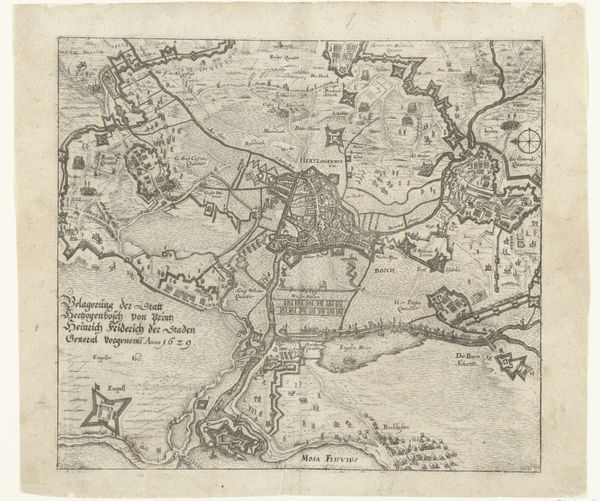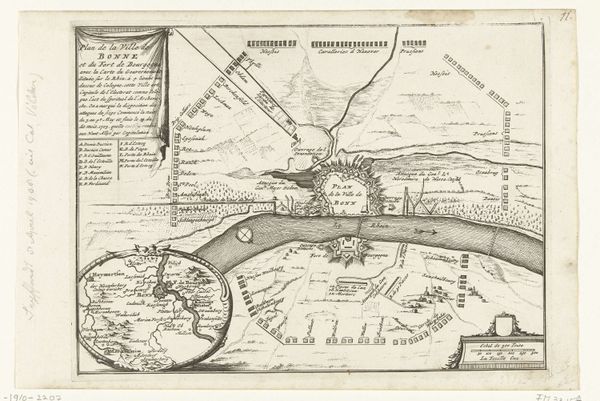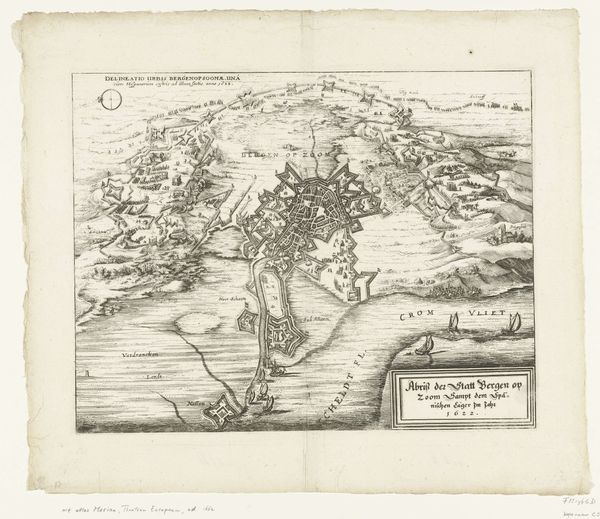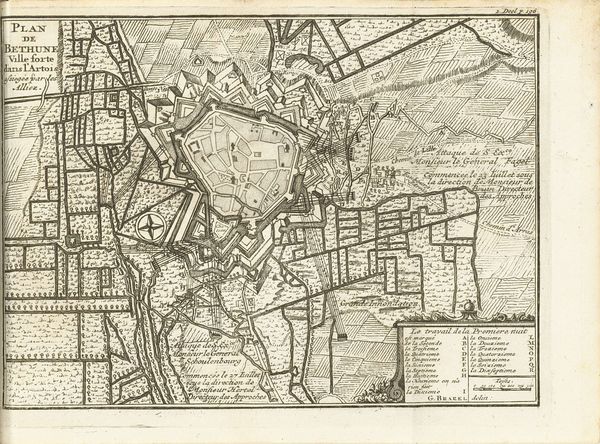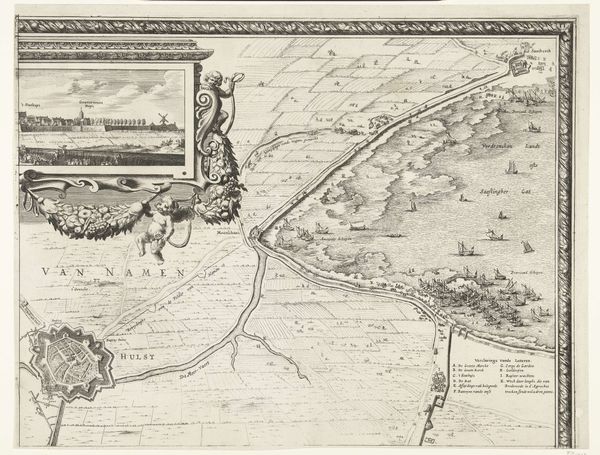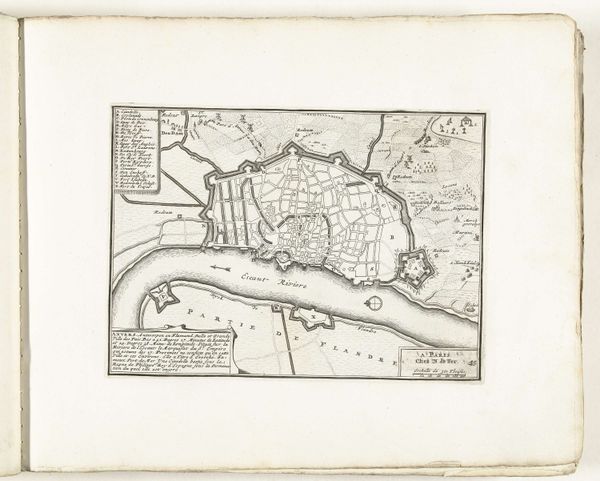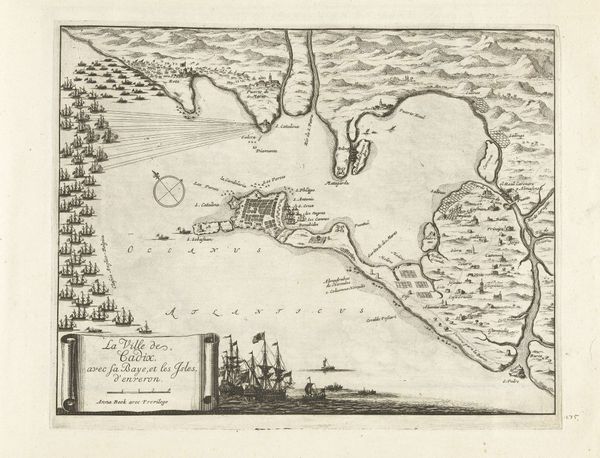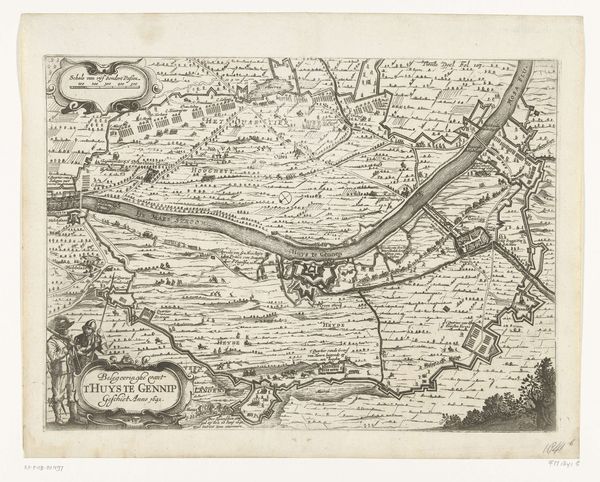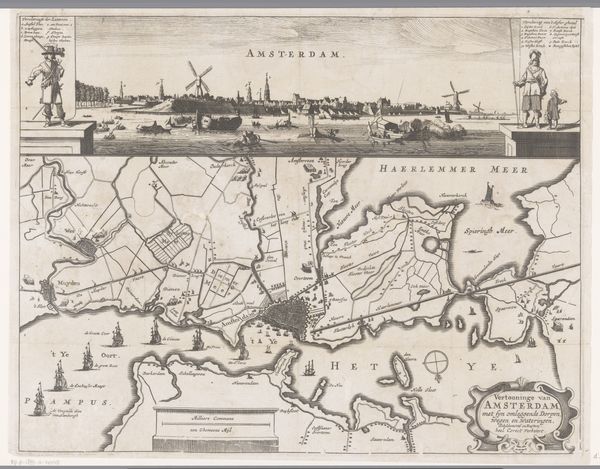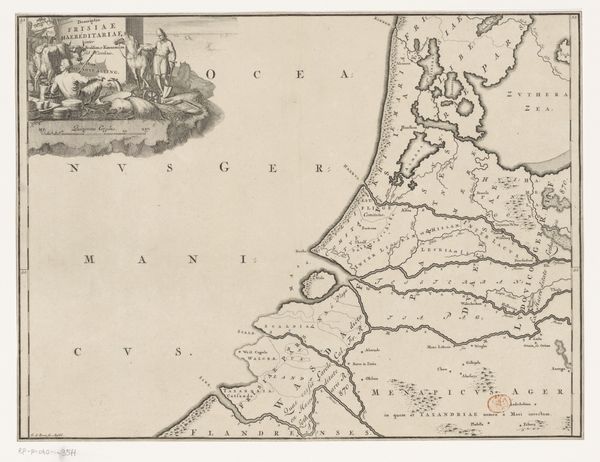
print, engraving
#
baroque
#
dutch-golden-age
# print
#
pen illustration
#
landscape
#
cityscape
#
engraving
Dimensions: height 280 mm, width 311 mm
Copyright: Rijks Museum: Open Domain
Editor: Here we have "Beleg van Hulst, 1645", dating back to 1645. It's attributed to an Anonymous artist and resides here at the Rijksmuseum. As a print, the detailed etching immediately strikes me. The lines are so precise! I am curious, what is your take on this bird’s eye view? Curator: You know, it's funny how maps can become art, freezing a moment in time. For me, the real power of this piece lies in the untold stories – think about it, each tiny house, each line representing a road, they all held lives, dramas, small joys amidst this siege. What kind of desperation and anxiety you think those folks felt at that time? Editor: I suppose I never really thought of it that way. That certainly gives the image more depth. So, from a purely art historical perspective, does it tell us much about Dutch Golden Age printmaking? Curator: Absolutely. See how meticulously detailed the depiction of the siege is, even with plumes of smoke emerging! Notice the use of line, its scientific approach—characteristic of the era's desire to map and master the world around them, not too dissimilar of paintings from that era, no? What feeling did you have about other similar works of the time? Editor: The objective details combined with… something less tangible? Maybe the implied human element, as you mentioned? Curator: Precisely. And that tension, that push and pull, is where I think the piece transcends just being a historical document. It becomes something deeply human. Editor: It’s interesting to consider how something so seemingly objective can reveal so much about subjective human experience. Curator: That’s it! The beauty of art isn’t always on the surface; sometimes it whispers from the very lines themselves. Editor: Right, seeing beyond the lines to get a deeper connection. Thanks for that point!
Comments
No comments
Be the first to comment and join the conversation on the ultimate creative platform.

